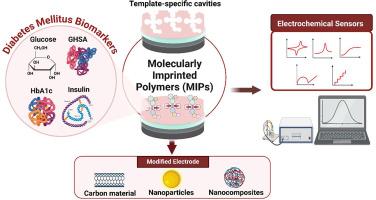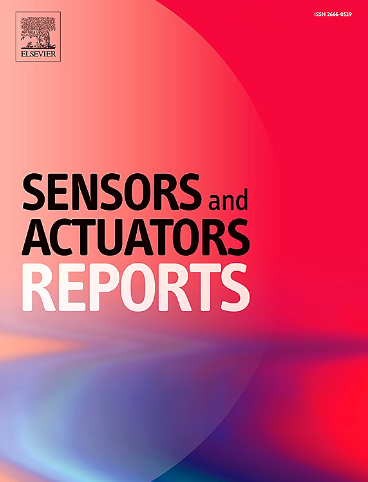Molecularly imprinted polymer technology for electrochemical detection of diabetes-related biomarkers
IF 7.6
Q1 BIOTECHNOLOGY & APPLIED MICROBIOLOGY
引用次数: 0
Abstract
Delayed treatment of diabetes mellitus (DM) can result in severe complications, including cardiovascular disease, neuropathy, and kidney failure, emphasizing the critical importance of early and accurate detection. Key biomarkers for DM diagnosis and monitoring include glucose, insulin, glycated hemoglobin (HbA1c), and glycated albumin (GHSA), which are typically measured using techniques like chromatography, electrophoresis, and immunoassays. While these methods offer high accuracy and reliability, their application is often limited by the need for sophisticated instrumentation, high operational costs, and lengthy analysis times, making them less suitable for point-of-care diagnostics. As an alternative, Molecularly Imprinted Polymers (MIPs) have emerged as a promising solution due to their exceptional specificity in biomarker recognition, mimicking the selective binding properties of natural antibodies. MIPs-based electrochemical sensors offer significant advantages, including high stability, selectivity, reproducibility, and cost-effectiveness, making them highly suitable for rapid and portable biomarker detection. This review provides a comprehensive overview of recent advances in MIPs-based electrochemical sensors for DM biomarker detection, emphasizing various synthesis strategies, including bulk polymerization, surface polymerization, electropolymerization, and cooling polymerization. Furthermore, key factors influencing sensor performance, such as functional monomers, crosslinkers, and initiators, are discussed. The continued development of MIPs-based electrochemical sensors holds great potential for enhancing the accessibility and efficiency of DM biomarker detection, with ongoing research paving the way for their integration into point-of-care diagnostic platforms.

分子印迹聚合物技术用于糖尿病相关生物标志物的电化学检测
糖尿病(DM)的延迟治疗可导致严重的并发症,包括心血管疾病、神经病变和肾衰竭,这强调了早期和准确检测的重要性。糖尿病诊断和监测的关键生物标志物包括葡萄糖、胰岛素、糖化血红蛋白(HbA1c)和糖化白蛋白(GHSA),通常使用色谱、电泳和免疫分析等技术进行测量。虽然这些方法具有很高的准确性和可靠性,但它们的应用通常受到复杂仪器、高操作成本和长时间分析时间的限制,使它们不太适合即时诊断。作为替代方案,分子印迹聚合物(MIPs)由于其在生物标志物识别方面的特殊特异性,模仿天然抗体的选择性结合特性,已成为一种有前途的解决方案。基于mips的电化学传感器具有显著的优势,包括高稳定性,选择性,可重复性和成本效益,使其非常适合快速和便携式生物标志物检测。本文综述了用于DM生物标志物检测的基于mips的电化学传感器的最新进展,重点介绍了各种合成策略,包括本体聚合、表面聚合、电聚合和冷却聚合。此外,还讨论了影响传感器性能的关键因素,如功能单体、交联剂和引发剂。基于mips的电化学传感器的持续发展在提高糖尿病生物标志物检测的可及性和效率方面具有巨大的潜力,正在进行的研究为将其集成到护理点诊断平台铺平了道路。
本文章由计算机程序翻译,如有差异,请以英文原文为准。
求助全文
约1分钟内获得全文
求助全文
来源期刊

Sensors and Actuators Reports
Multiple-
CiteScore
9.60
自引率
0.00%
发文量
60
审稿时长
49 days
期刊介绍:
Sensors and Actuators Reports is a peer-reviewed open access journal launched out from the Sensors and Actuators journal family. Sensors and Actuators Reports is dedicated to publishing new and original works in the field of all type of sensors and actuators, including bio-, chemical-, physical-, and nano- sensors and actuators, which demonstrates significant progress beyond the current state of the art. The journal regularly publishes original research papers, reviews, and short communications.
For research papers and short communications, the journal aims to publish the new and original work supported by experimental results and as such purely theoretical works are not accepted.
 求助内容:
求助内容: 应助结果提醒方式:
应助结果提醒方式:


